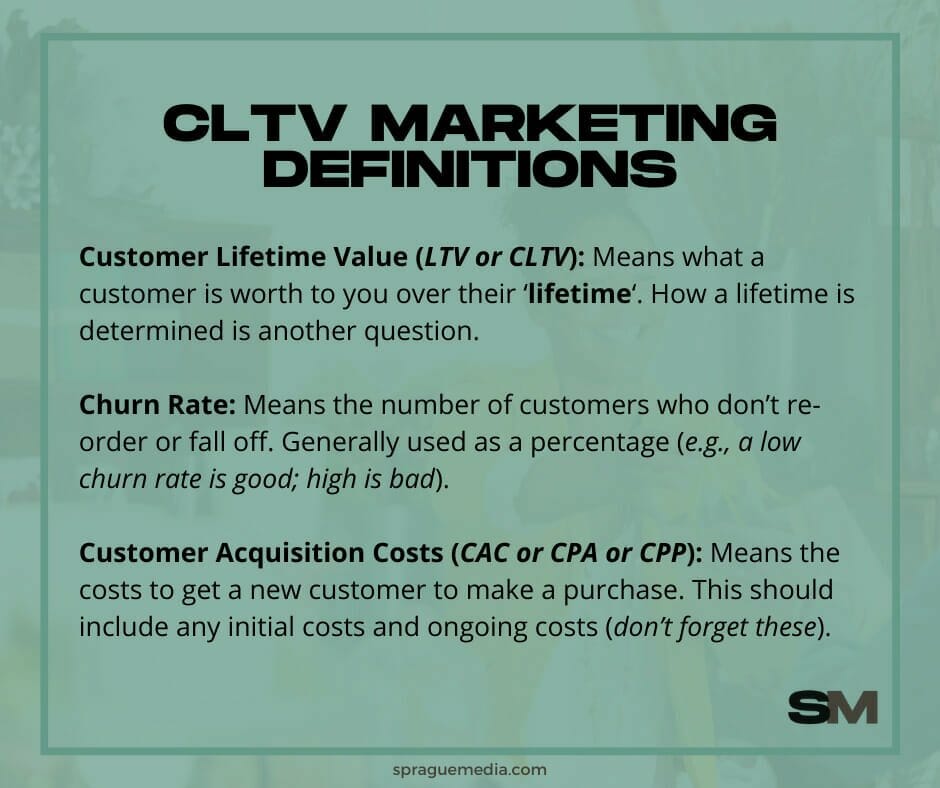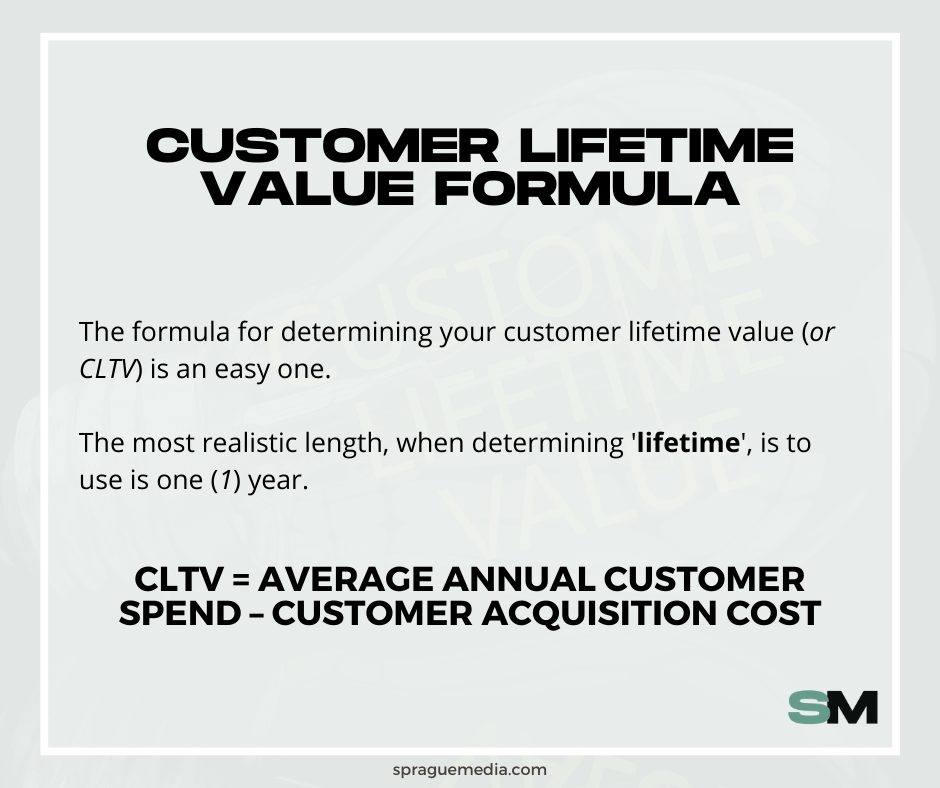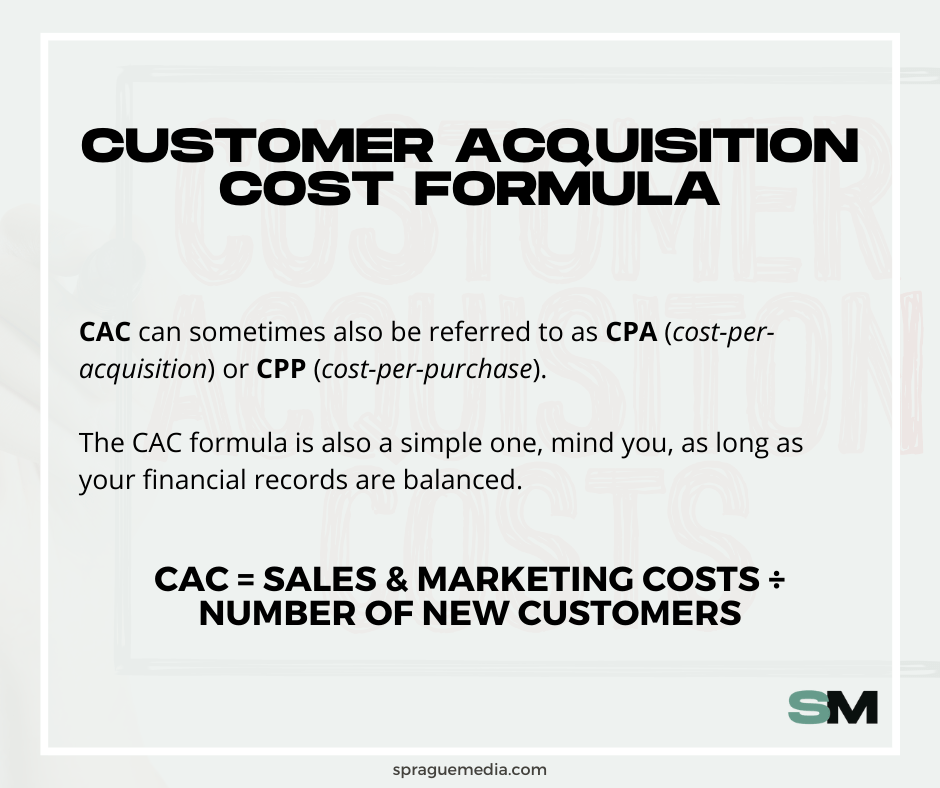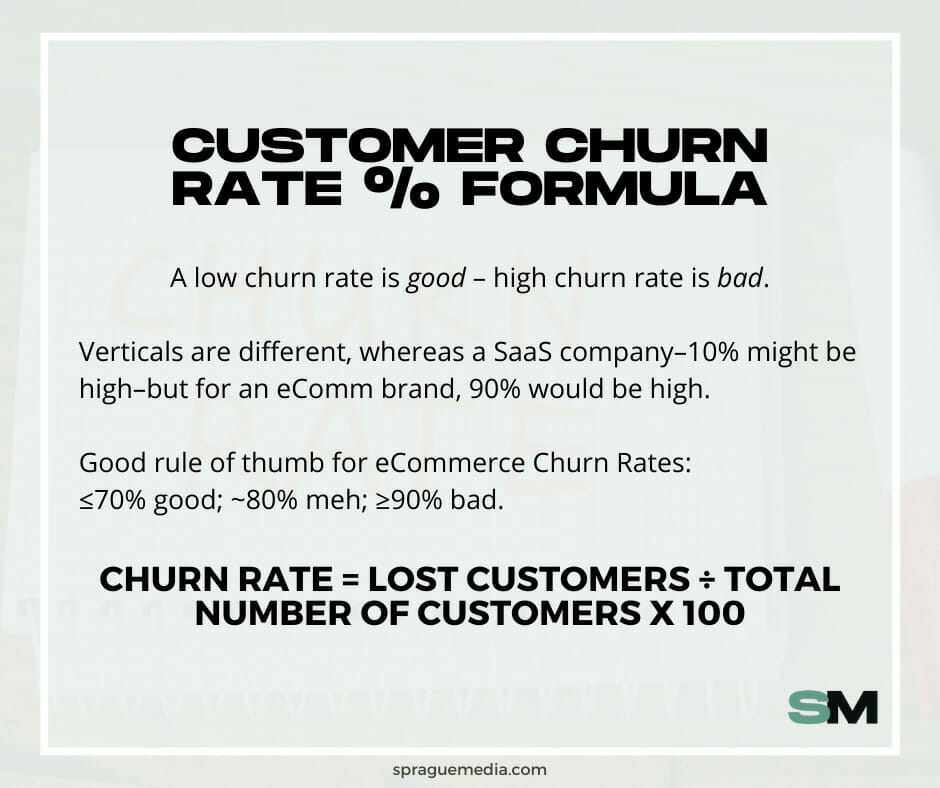Before we begin, you’ll want to review these definitions…
Definitions
- Customer Lifetime Value (LTV or CLTV): Means what a customer is worth to you over their ‘lifetime‘. How a lifetime is determined is another question.
- Churn Rate: Means the number of customers who don’t re-order or fall off. Generally used as a percentage (e.g., a low churn rate is good; high is bad).
- Customer Acquisition Costs (CAC or CPA or CPP): Means the costs to get a new customer to make a purchase. This should include any initial costs and ongoing costs (don’t forget these).

Are You Maximizing Customer Lifetime Value (CLTV) And Retain More Customers?
Ever seen that one person in your company constantly saying “why should we do ‘x‘?” or “that’s too expensive.“
But when you explain the actions and reasoning behind it, they are finally on board?
That’s retention.
Retention campaigns can help increase your customers lifetime value (LTV or CLTV) to your brand by incentivizing them to return to spend with you.
In this post, we’ll walk through how many companies use these strategies and the results they’ve achieved.
Whether increasing customer lifetime value is a priority for you or not, this article will give a few valuable insights into what getting more out of your customer touch points looks like.
LTV is a big term which I like to think of as the “calculator money” that your customers will spend over the course of their entire relationship with you.
It’s a metric that most businesses look at, but some are more dedicated than others.
Calculating Lifetime Value Of A Customer (LTV)
The formula for determining your customer lifetime value (or CLTV) is an easy one.
BUT…
Is it the right formula?
In most cases the time-length used would be the ‘life‘ of a customer.
However, we could all die waiting to determine the lifetime value.
The most rational and realistic length of time to use is one (1) year.
So…
CLTV = Average Annual Customer Spend – Customer Acquisition Cost

Calculating Customer Acquisition Costs Formula
CAC can sometimes also be referred to as CPA (cost-per-acquisition) or CPP (cost-per-purchase).
The CAC formula is also a simple one, mind you, as long as your financial records are balanced.
CAC = SALES & MARKETING COSTS ÷ NUMBER OF NEW CUSTOMERS

Calculating Customer Churn Rate Percentage Formula
Your customer churn rate (in percentage) is important as this metric helps you determine how well your campaigns are performing.
Remember, a low churn rate is good – high churn rate is bad.
All verticals are different (keep this in mind).
As a SaaS company, 10% might be high, whereas for an eCommerce brand, 90% would be high.
Good rule of thumb for eCommerce Churn Rates: ≤70% good; ~80% meh; ≥90% bad.
CHURN RATE = LOST CUSTOMERS ÷ TOTAL NUMBER OF CUSTOMERS x 100

CLTV Boosting Loyalty Program Strategies
There is an entire new branch dedicated to marketing retention strategies.
Retention campaigns can be as simple as sending out an email campaign to your customers on their one year anniversary with your brand.
Or as complex as offering different levels of rewards for a customer who purchases from you but does not redeem any reward.
The following are examples of some retention strategies that are used by many companies in order to increase their customer lifetime value.
The 30% CLTV Retention Rate Rule
Before describing retention campaigns, let’s talk about the “30% rule”.
This was popularized by Leslie Deutsch (founder of angel investor group Stanford Angels) in her book, “No B.S. Business Advice for Smart Entrepreneurs“.
From her experience as an angel investor she noticed that typically businesses had one or two investors who believed in them enough to invest and bring them to market.
Then there were some that had enough faith and money to get the business started.
Then there were the fringe cases, those businesses that were startup failures or those “whales” that thought they could be a whale.
The following is her description of the behavior of each group:
The 30% rule says that companies should aim for 30% of their customers to become repeat customers.
When you reward them with a loyalty program, the thought is that these are customers who won’t need to use your product or service again but would come back to you if they had problems with your competitor’s offering.
This can boost lifetime value because it gives your business another point of retention from which they will be loyal for years to come.
The 30% rule is often used to define the minimum threshold for creating a loyalty program.
Since it’s a minimum value, it doesn’t take into account things like churn and some other metrics that may not directly increase your lifetime value.
CUSTOMER EVANGELISTS
Give customers a reason to return to interact with your brand outside of purchasing.
This can be done in a variety of ways such as informational email campaigns, an updated blog, social media interaction or customer success stories.
Giving customers a reason to return to interact with your brand outside of purchasing.
This can be done in a variety of ways such as informational email campaigns, an updated blog, social media campaign interactions or customer success stories.
CUSTOMER LOYALTY PROGRAMS
These are one type of retention strategy that increases the chances of customers coming back to purchase or otherwise interact with your business.
The two main types are product-based loyalty programs and point-based loyalty programs.
The main thing we want to avoid with loyalty programs is having a bunch of customers who are racking up points with you and then redeeming those points years down the road.
AUTHENTIC CONTENT
These customers want more than just your eCommerce products.
Provide additional information to help them explore the possibilities that your products and services open up for them.
This can be as simple as giving them an email newsletter or perhaps they’d like a video tutorial series on Youtube.
CUSTOMER DISCOUNTS
Provide customers with a reason to return while also increasing their lifetime value.
Imagine someone who bought from you for $100 and then you send out an email offering 20% off their next purchase on your site.
If they buy again, the calculator money is now $80 instead of $100, thus increasing their lifetime value by 20%.
STRATEGIC PARTNERSHIPS
Send out special offers to customers if they have the partner’s app or use their service.
This can work particularly well if you have a loyalty program in place and they are willing to add on value to it.
REFERRALS
Generate word of mouth and increase your customer LTV by launching and running a referral campaign.
This can be done in a variety of ways but is most popular through email campaigns which offer rewards to the customer when they refer you.
SPECIAL OFFERS
Send out a special offer or discount if they spend $100.
This can work particularly well if you have a loyal customer base who has consistently been spending with you for a long time.
CONTENT & ADVOCATES
If your content is compelling enough that people want to share it with others, then create a way for them to share your content on social media and other channels.
By turning your customers into advocates for your brand, you are building up your brands trust and reputation which will eventually turn into customers.
Final Thoughts About LTV & Loyalty Program Strategies
These are just some examples of increasing your customer LTV through loyalty programs.
Simple strategies that you can create and implement within your eCommerce brand.
These LTV boosting strategies can be as simple as adding in a 20% discount on a purchase for your existing customers.
As complex as offering 14% to your advocate customers…
Or 15% to partner customers if they share an exclusive offer with their friends.
Regardless of what LTV strategy you decide to use, remember that in order to make it successful you first need a base of loyal customers.
These are the foundation from which you will build upon when implementing any type of loyalty program.
It’s worth noting that many businesses will create retention strategies by simply surveying their most loyal customers and asking them what they’d like added onto their loyalty program.
This is an easy way to gain direct insight into what exactly your most valuable customer segment desires from your brand.


